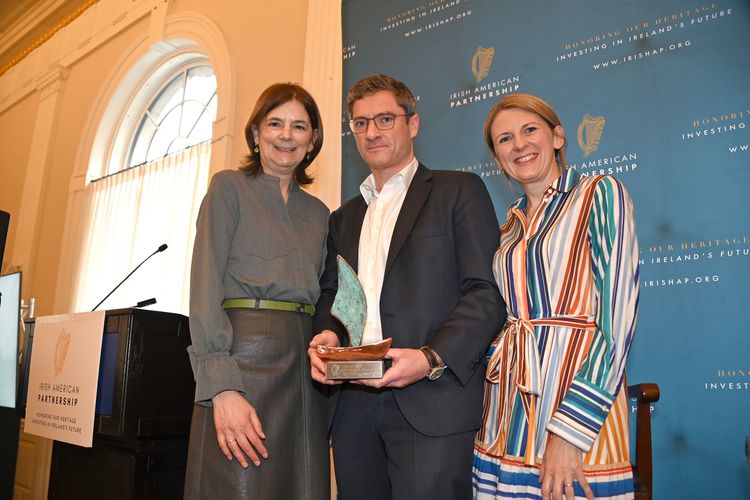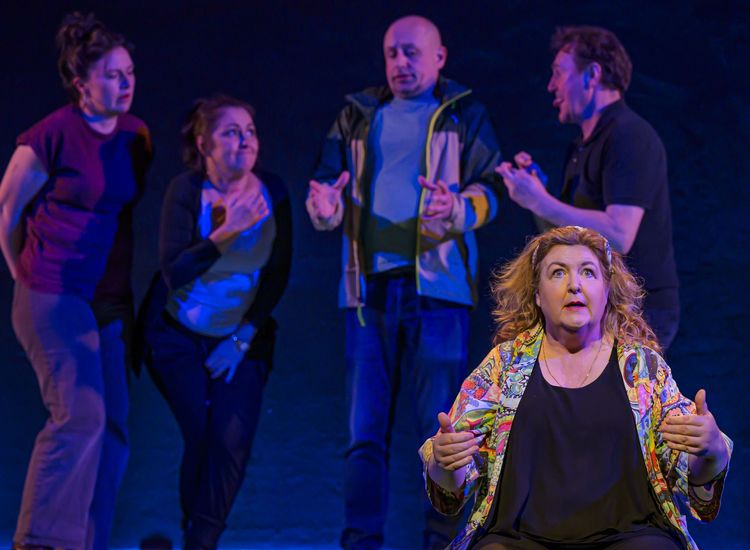Bill Ochs, born into a Jewish family in New Jersey, was
for a time the only uilleann piper in New York.
By Daniel Neely
Irish music in New York lost an important member of the community last week in the passing of Bill Ochs. Ochs was an inspired multi-instrumentalist (tin whistle, uilleann pipes, & flute), an influential and noted teacher, a performer, and a producer. Connected to the New York’s Irish Arts Center (irishartscenter.org) from its early days in the 1970s, he was one of the organization’s important pioneering voices and long its main musical organizer.
Ochs grew up in a Jewish family in Essex County, New Jersey, but lived in Manhattan’s Hell’s Kitchen neighborhood for much of his life. He was inspired to play pipes in the early 1970s after hearing Liam O’Flynn and found a local teacher in Tom Standeven, who aided his early development. Later, he traveled to Ireland and learned from piping legends Seamus Ennis and Willie Clancy.
His reputation and influence as a teacher was remarkable. Unseasoned players especially loved him for his conscientious approach. Musician and music historian Don Meade explained “There was a time when he was really the only uilleann piper in New York and so had a substantial influence. If you wanted to get started, you went through Bill. He was a big influence on so many, like Jerry O’Sullivan and Tim Britton.” The “Boot Camps” in ornamentation, articulation, and phrasing he offered, often through Irish Arts Center, were perennial favorites.
Ochs was a respected performer (he was indeed the first piper in Mick Moloney’s Green Fields of America) who also produced some important work. His “Clarke Tin Whistle” Book & CD is a seminal tutor that influenced tens of thousands of budding whistle players. He was also a tireless researcher of Mico Russell’s music. In addition to producing “Ireland's Whistling Ambassador,” a film about Russell, he produced the excellent double-CD set, “Rarities & Old Favorites 1949–1993: Tin Whistle, Flute & Songs from North Clare & Beyond.”
“I admired Bill’s devotion to the memory of Mico Russell greatly,” Mick Moloney told me. “His work had a professional quality to it, but moreover was very moving – he put extraordinary work into paying tribute to Mico’s memory.”
Ochs was an important part of traditional Irish music’s resurgence in New York City over the last 40 years and his passing is significant. The community will remember his good work for years to come and keep their thoughts with his family.
Outstanding 1916 tribute
In the player this week is a stunningly beautiful album from legendary musician and composer Charlie Lennon. "Aille na hAille – A Terrible Beauty” is a suite of original pieces that honor the heroes of the Easter Rising and evoke in different ways the 1916 Poclamation’s signatories. This is an outstanding, beautifully rendered tribute that will excite and inspire anyone interested in the story about the struggle to establish an independent Irish Republic.
Launched in February at the Unitarian Church in Dublin, the album features a blend of classical and traditional musicians. In addition to Lennon (fiddle, piano, viola), performers include Finghan Collins (piano), Elizabeth Cooney (violin), RTÉ Con Tempo String Quartet, Ronan Browne (flute, whistle, uilleann pipes), Éilís Lennon (violin), Caitlín Nic Gahbann (concertina), Jim Higgins (percussion), Séan Lennon (fiddle), and Muireann Nic Amhlaiobh (vocals), all of whom come together here brilliantly.
Lennon’s work, however, is what is front and center here. Born in Kiltyclogher, Co. Leitrim, the composer has a well-earned reputation as one of traditional music’s great tunesmiths. Indeed, several of his jigs, reels, and hornpipes are part of the music’s standard repertory. However, they are but an entry point for the full breadth of Lennon’s expressive ability, as evidenced by this album.
Leitrim’s Charlie Lennon will perform in
Queens and Connecticut next week.
Here, listeners are offered a stylish, sophisticated, and genuinely inspired blend of small ensemble classical and traditional musics. Tracks that feature plaintive fiddling and rousing string quartet music (“Planxty James Connolly,” “Easter Lambs”) pair seamlessly with music that would be more familiar to a traditional musician’s ear (“Ceannt the Piper,” “Tom Clarke’s Jig,” “McDonagh's March”). Slow airs like “Lament For O’Donocan-Rossa" and “Rus Muc” blend the two traditions in a poignant way, while songs like “Fornocht Do Chonac Thú” add variety and a haunting sense of pathos.
The disc ends with a exhilarating three-track sonata for violin and piano. Each of its sections evokes a different aspect of the Rising in style and tempo, starting with the excitement attached to the Rising itself, followed by the mournful aftermath, and ending with a hopeful call for action. These three tracks make an incredible stand-alone statement, but fit in with the tone of the rest of the suite perfectly.
Ultimately, ”Aille na hAille – A Terrible Beauty” is a stirring, brilliantly conceived tribute. Lennon is very active composer who has brought a loving, tempered sensibility to the subject matter that makes the end result feel completely free of the plastic opportunism that centenary seems to have, on occasion, invited. This is a highly recommended album that music lovers should search out. Good news for NYC and Connecticut, as well: Lennon will perform the suite with the NYC Con Tempo String Quartet, Kieran O’Hare, Éilís Lennon, Seán Lennon, and Cathie Ryan on Friday, Oct. 28, at the St. Sebastian Church in Woodside, Queens (contact Fiona Smyth 631-796-7217 for details & tickets) Saturday, Oct. 29, and at the Edgerton Center at Sacred Heart University in Fairfield, Conn.











